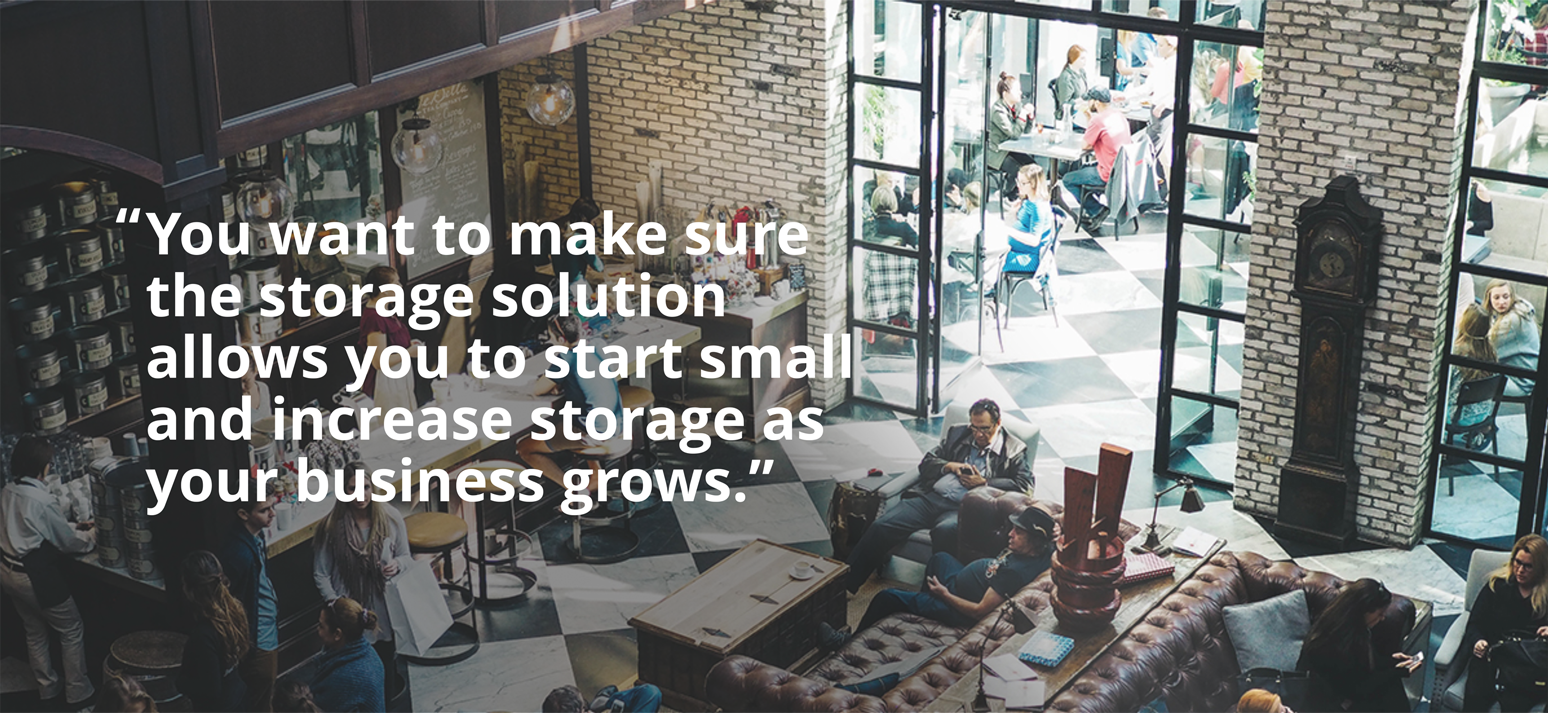Cloud vs. onsite surveillance isn’t as hard a choice as you think.
We’ve all been there. An Amazon package mysteriously disappears. A stranger came knocking on your door late at night. Assets got stolen from a shop.
Surveillance is a universal need.
When it comes to selecting a surveillance solution, much of the discussion revolves around which camera to buy, while storing surveillance footage is often overlooked. But, if the recording isn’t available when you need it, what good is the surveillance system at all?
There are a few different data storage options for surveillance, from cloud storage to local network options. But, in truth, only one of those is a trusted long-term solution. Let’s take a look now at what you should consider when selecting a storage solution for your home or business surveillance system.
Trouble with the cloud
In a cloud-based surveillance system, security cameras record footage and upload them to a cloud server for the user. Because these are generally all-in-one systems — i.e., the same provider sells you the camera, the software, the cloud storage service — the surveillance recordings are kept on the provider’s cloud.
Herein lies the first issue: being locked in with one option. Because you’re stuck with the provider’s cloud, you aren’t able to comparison shop for the best deal. This also locks you into the provider’s subscription fee for using their server space, which can add up quickly. For example, most providers charge a recurring monthly fee to access past recordings. Many people, especially those who travel often, want the ability to store a week or two worth of recordings. As you can imagine, if you were to go with a cloud storage solution, this would be quite costly. You’ll also want to consider the number of cameras you’ll need. With a cloud storage solution, you might be required to pay not just one, but multiple monthly fees for large quantities of cameras.
Cloud providers also have an incentive to minimize the amount of server space each customer uses so there may be a maximum number of recordings and no option to record continuously or change the pre-recording duration when motion is detected. This means recordings might not capture critical events. What happens if you only get a brief glimpse of a foot walking away because the motion detection turned the camera on too late?
Then there’s the issue of bandwidth. Because these are cloud-based systems, they rely on your bandwidth to upload footage. There are many devices having continuous connections to the Internet and consuming your bandwidth, such as computers, home assistants, smart TVs, and video game consoles. This can cause video relays to transfer slowly, delay “real-time” notifications to your phone, or even cause issues with the footage itself. This issue is further exacerbated if there are many cameras consuming bandwidth at one time.
That connection to the Internet can also be a vulnerability. It creates an entry point for a hacker to disrupt your video feed, or worse, use your cameras to spy on you.
This leads us to the issue of privacy. Your home video recordings — and maybe even business recordings too — likely contain personal information. Consider the cameras you might install inside your house used to keep an eye on pets or young children. Storing these types of video recordings on a public server might cross a line for some people.
What onsite storage looks like
Now that we’ve addressed cloud storage’s limitations for both home and business surveillance, let’s walk through what to consider for onsite storage. Whether you need a robust, multi-camera system for your business or a few perimeter units around your home, a Network Video Recorder (NVR) is one option. An NVR connects to your local network and stores the video recorded and encoded by security cameras.
Even within the NVR category, there are a lot of considerations that may have an impact on your decision. For example, many NVRs don’t offer flexibility when choosing cameras, and instead lock you into an all-in-one camera and storage solution. This might mean that you can’t pair your camera model of choice with the NVR. It’s best to find a system that doesn’t lock you into one kind of hardware. This is where a more flexible and vendor-agnostic solution like a NAS (Network Attached Storage) may be a good fit. A Synology NAS system, for example, supports more than 6,000 camera models.
Like NVR, NAS allows you to manage multiple cameras, watch live feeds from anywhere, and store recordings. NAS acts as its own computing unit and uses RAID (a “Redundant Array of Independent Discs”) to create redundancies of your footage in one unit for added reliability. This means your surveillance recordings will remain accessible even if a hard drive fails — an important feature that many NVRs on the market don’t offer.
Beyond the acronyms, there are other considerations to take into account. For example, different systems also have different software options. They vary in terms of remote viewing capabilities, customizable motion detection, analytics that help locate specific recordings, and video file backup, sharing, and streaming. Don’t forget to consider the availability and quality of the mobile app experience.
Another important question to ask when looking for a surveillance solution for a business is scalability. You want to make sure the storage solution allows you to start small and increase storage as your business grows. Synology gives you that flexibility with the ability to adjust as needed from 1TB to 1,000TB. If your business plans to add additional locations as it expands, be sure that your surveillance solution allows you to manage everything from one place.
Your surveillance system is an investment that comes with a hefty price tag. Given this reality, you’ll also want to determine whether the solution you’re evaluating has any additional capabilities. For example, NAS can do many more important functions, including data backup, file sharing, and streaming multimedia files to various devices.
In the end, it’s a lot to consider, and a lot of questions to ask yourself about your needs and priorities. For almost any arrangement, however, Synology has a flexible solution with constantly improving firmware to support. Clients like Express Stores, Holiday Inn, and Camden Market can attest to it.
Ready to go deeper? You can learn more about Synology’s Surveillance Station here, select an NVR system based on your requirements here, and for those who prefer listening, watch an instructional how-to video here.


